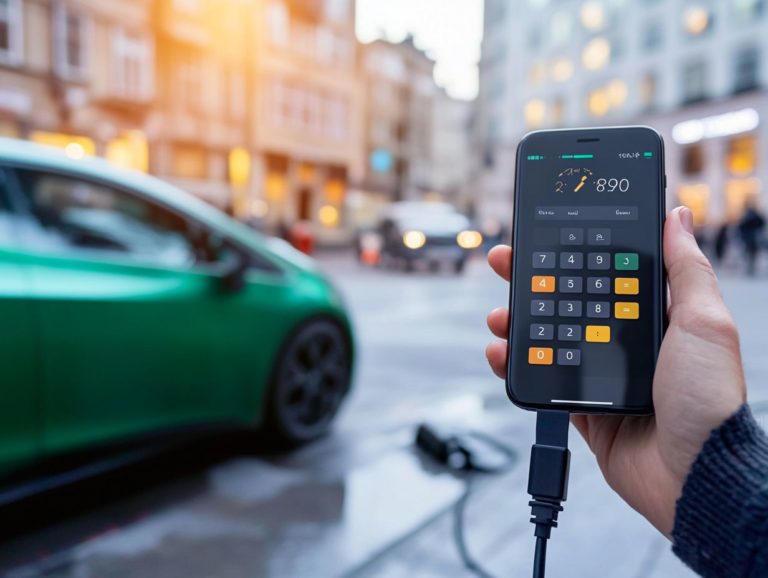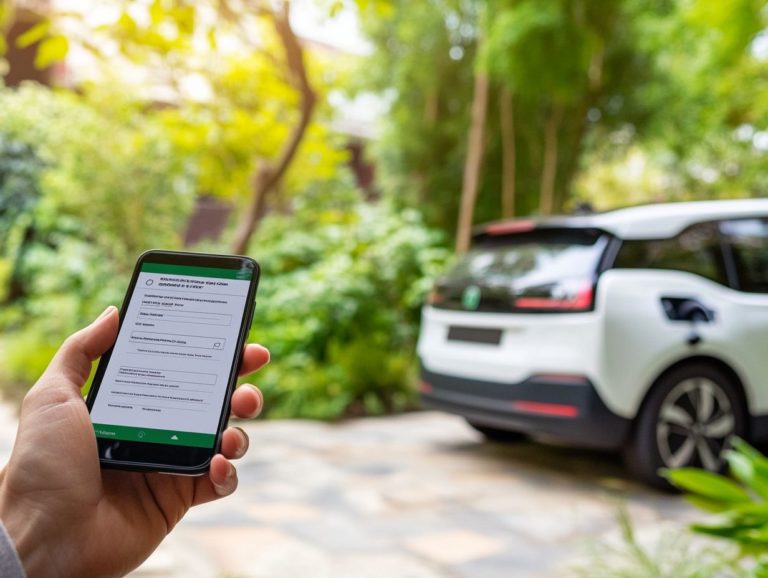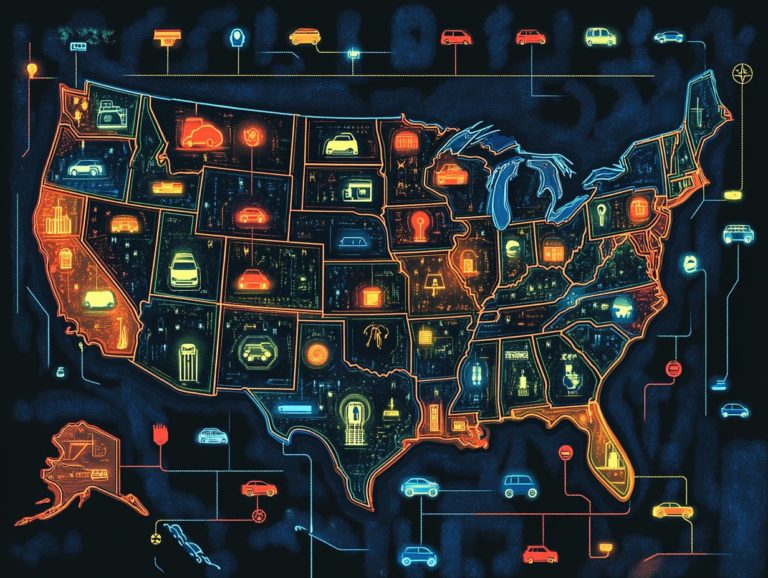are there incentives for installing home chargers?
As electric vehicles (EVs) continue to rise in popularity, many homeowners are contemplating the installation of home chargers to enjoy the convenience of charging their electric vehicles right at home.
What about the financial incentives that could make this transition more appealing? This article delves into the array of government programs and manufacturer incentives designed to help offset installation costs.
You ll discover a thorough analysis of initial expenses compared to long-term savings, the eligibility criteria for these incentives, and vital considerations for selecting the ideal charger for your home.
Contents
- Key Takeaways:
- Incentives for Installing Home Chargers
- Costs and Savings of Home Chargers
- How to Qualify for Incentives
- Other Considerations for Home Charger Installation
- Frequently Asked Questions
- Are there incentives for installing home chargers?
- How can I find out what incentives are available in my area?
- What types of incentives can I expect for installing a home charger?
- Is there a time limit for applying for incentives?
- Can I still receive incentives if I have already installed a home charger?
- Are there any requirements for receiving incentives for home charger installation?
Key Takeaways:
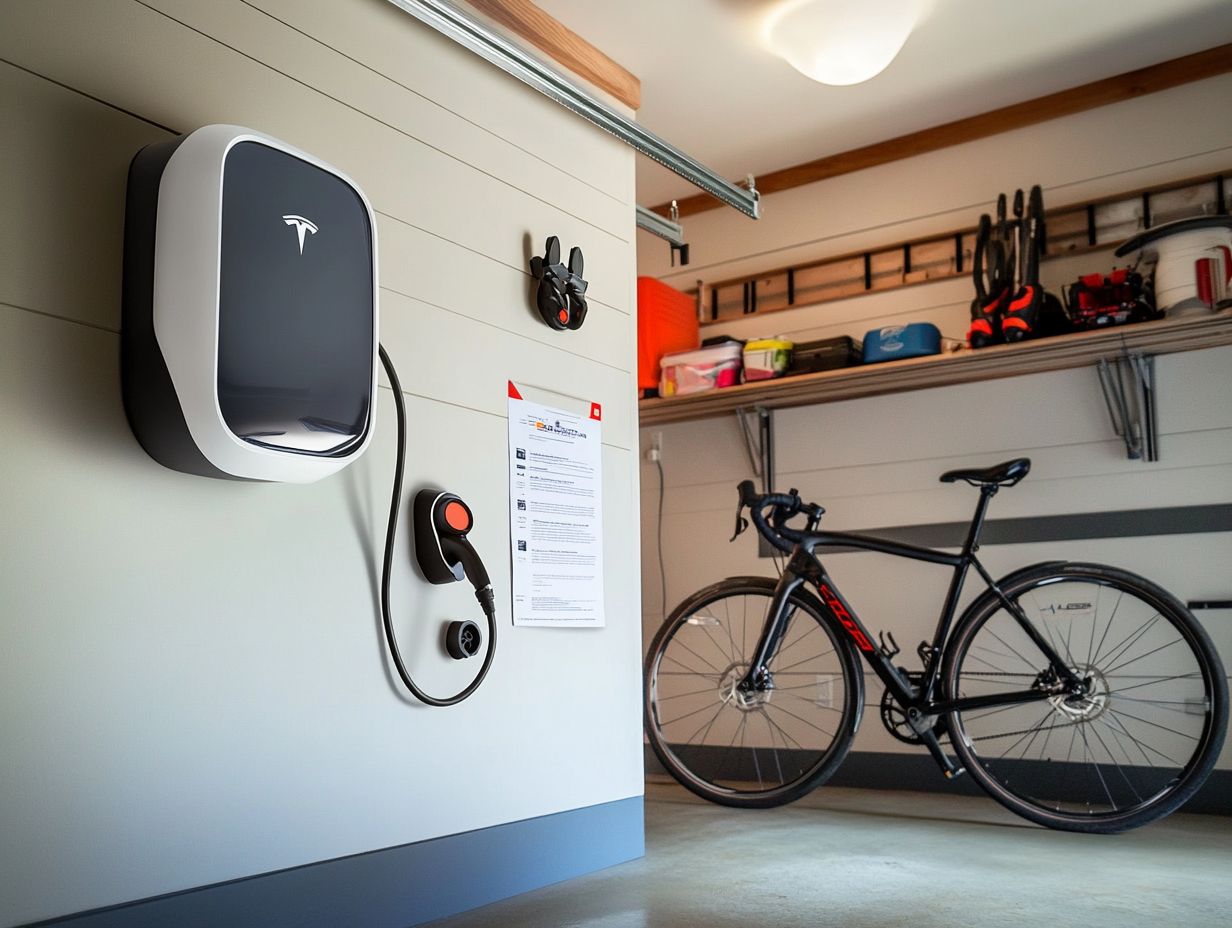
Unlock savings with government programs and incentives! Financial programs and tax credits can make installing home chargers more affordable, encouraging the switch to electric vehicles. To learn more about specific offers, check out what incentives are available for EV buyers. Manufacturers also offer incentives like discounted or free home charger installations. Be sure to research eligibility requirements before applying for these benefits.
What are Home Chargers?
Home chargers, also referred to as electric vehicle chargers, are devices designed for convenient charging of electric vehicles (EVs).
With these chargers, you can recharge your vehicle at home, turning your garage into a personal fueling station. They re essential for modern electric vehicle ownership, allowing you to power up overnight or during the day, effectively alleviating range anxiety.
Thanks to advancements in technology, home chargers come in various types and functionalities, accommodating electric vehicles from renowned manufacturers like General Motors, BMW, and Mercedes-Benz. Understanding the different types of chargers available is crucial for any prospective EV owner.
Level 1 chargers use a standard household outlet and provide a slower charge. In contrast, Level 2 chargers require a dedicated electrical circuit and offer much faster charging times, making them the preferred choice for daily use. Both options are compatible with a wide range of electric vehicles, ensuring you can select a charger that aligns with your needs.
The adoption of home chargers is pivotal in establishing a robust charging network, enhancing public charging stations, and contributing to the infrastructure vital for widespread electric vehicle adoption.
Incentives for Installing Home Chargers
The installation of home chargers gives you the chance to take advantage of various incentives for charging station installation, such as federal tax credits and state rebates, designed to encourage electric vehicle (EV) adoption and improve energy efficiency.
Thanks to the Inflation Reduction Act, you can unlock substantial tax credits for installing EV charging stations, making it financially feasible to enhance your charging setup.
This initiative highlights a strong commitment to a sustainable future, providing financial support as you transition to electric vehicles!
Government Programs and Tax Credits
Government programs and tax credits are essential for reducing the costs associated with installing EV charging stations at home, allowing you to maximize your savings as an electric vehicle owner.
With the Inflation Reduction Act, you can access significant federal tax credits by using IRS Form 8911, which lowers the financial hurdles of adopting electric vehicle technology.
This initiative encourages the installation of home EV chargers and aligns with the broader climate goals set forth by lawmakers. By navigating the application process, you can easily determine your eligibility and submit claims for these valuable incentives.
Utilizing IRS Form 8911 allows you to report your expenses efficiently, ensuring you capture the maximum benefits available.
Along with federal tax credits, various state and local programs can also increase your savings. Engaging with community resources and consulting tax professionals can provide clarity on specific advantages and necessary steps, facilitating a smoother transition to sustainable energy solutions.
Check with your local provider today to see what incentives you qualify for!
Electric Vehicle Manufacturer Incentives
Electric vehicle manufacturers are offering enticing incentives to encourage you to adopt their EV models, reshaping the landscape of home charging solutions. Companies like General Motors, BMW, Mercedes-Benz Group, and Stellantis NV have launched a variety of programs that include rebates, financing options, and even free charging credits upon purchase.
These incentives make electric vehicles even more exciting to own. For example, General Motors offers a substantial rebate on home charging equipment, which helps lighten the financial load of installation. If you’re wondering can I install a home charging station?, BMW has a program that grants complimentary charging for a limited time at participating stations, allowing you to experience the perks of electric driving without the immediate financial pinch.
Stellantis NV has also introduced flexible financing plans, allowing you to spread out the costs of your EV over time, effectively lowering barriers to entry. These great incentives contribute to a flourishing ecosystem that supports sustainable transportation. Don’t miss out on these fantastic savings! Act now to take advantage of these offers.
Costs and Savings of Home Chargers
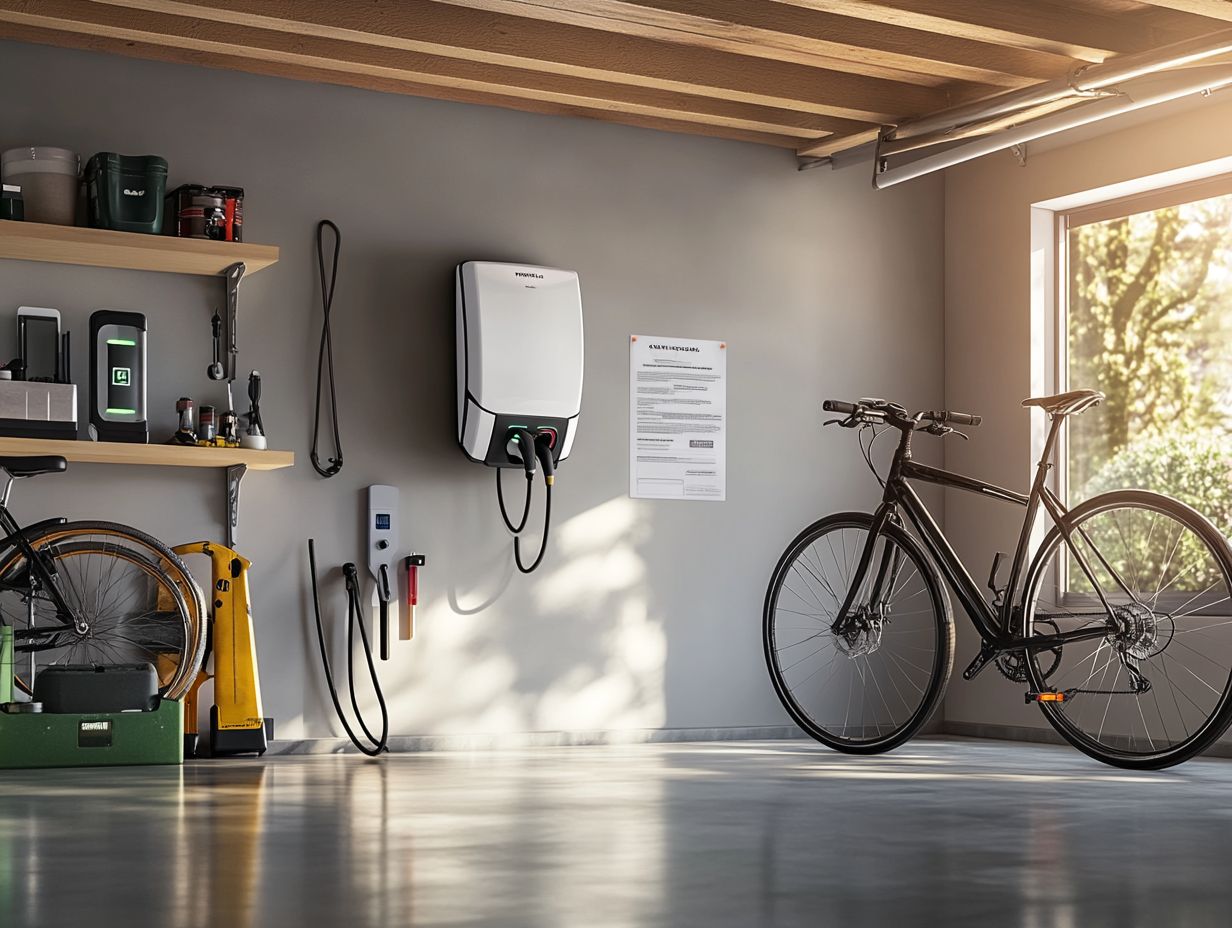
Understanding the costs tied to home chargers and the long-term savings they offer is essential for anyone contemplating an investment in EV charging stations. Initial installation costs can vary depending on the type of charger, setup complexity, and any available state rebates or tax credits. However, the advantages are undeniable.
Over time, these chargers can yield significant savings on fuel and maintenance expenses while enhancing energy efficiency, making them a wise financial choice for electric vehicle owners.
Initial Installation Costs
The initial installation costs of home chargers depend on factors like the type of EV charger you select and the existing electrical infrastructure in your home. You may need electrical upgrades to accommodate the new equipment, driving up your overall expenditure.
The complexity of the installation process can lead to varying costs, so it’s crucial to obtain detailed quotes from qualified electricians. If you choose a Level 1 charger, it uses standard home outlets, while a Level 2 charger is faster but requires special equipment.
Besides the upfront cost of the charger, consider labor fees, which can vary based on your location and the electrician s expertise. If your electrical panel needs an upgrade, this can significantly impact total costs.
Permits and inspections may add to your installation expenses. Conducting a thorough assessment of your physical space and electrical needs will provide a clearer understanding of the total investment required.
Long-term Savings on Fuel and Maintenance
One of the most compelling reasons to invest in a home EV charger is the long-term savings on fuel and maintenance costs. Electric vehicles generally have lower operating costs compared to traditional gas-powered vehicles, translating into significant savings over time.
With fewer moving parts, EVs often require less maintenance, making them an economically wise choice for environmentally conscious drivers. When you install an electric vehicle charger, you position yourself to maximize energy efficiency, further reducing overall expenditures.
By harnessing off-peak electricity rates, you can charge your vehicle at a fraction of the cost compared to relying solely on public charging stations. As electric vehicle technology continues to advance, you’re likely to see greater reductions in energy consumption and increased longevity of your car.
This cumulative effect enhances the allure of electric vehicle ownership and underscores how sustainable choices can lead to substantial financial advantages over the years. Explore home EV charger options today and start saving!
How to Qualify for Incentives
To qualify for incentives related to home EV charger installation, you must meet certain eligibility criteria. These criteria are set by various government programs and tax credits.
If you re looking to benefit from the Inflation Reduction Act or state rebates, ensure you meet specific requirements. These may include income limits, property ownership, and the nature of the installation.
By understanding these criteria, you can streamline the application process and significantly enhance your chances of securing financial assistance.
Eligibility Requirements
The eligibility requirements for accessing tax credits and government programs for home EV chargers can differ significantly depending on your location and the specific incentives available.
As a homeowner, you’ll typically need to provide proof of property ownership. You may also need documentation via IRS Form 8911, which is used for claiming federal tax credits. Local states may impose additional criteria such as income brackets or specific installation standards, so it s essential to research the guidelines that apply to your situation.
Be ready to present receipts for your charger purchase and installation. Some programs may require proof of installation by a qualified electrician, so keep relevant permits and compliance documents on hand.
Check with your utility providers for extra rebates they can really add up! By gaining a comprehensive understanding of both federal and state-level requirements, along with maintaining meticulous records, you can streamline the application process and significantly improve your chances of securing available rebates.
Other Considerations for Home Charger Installation
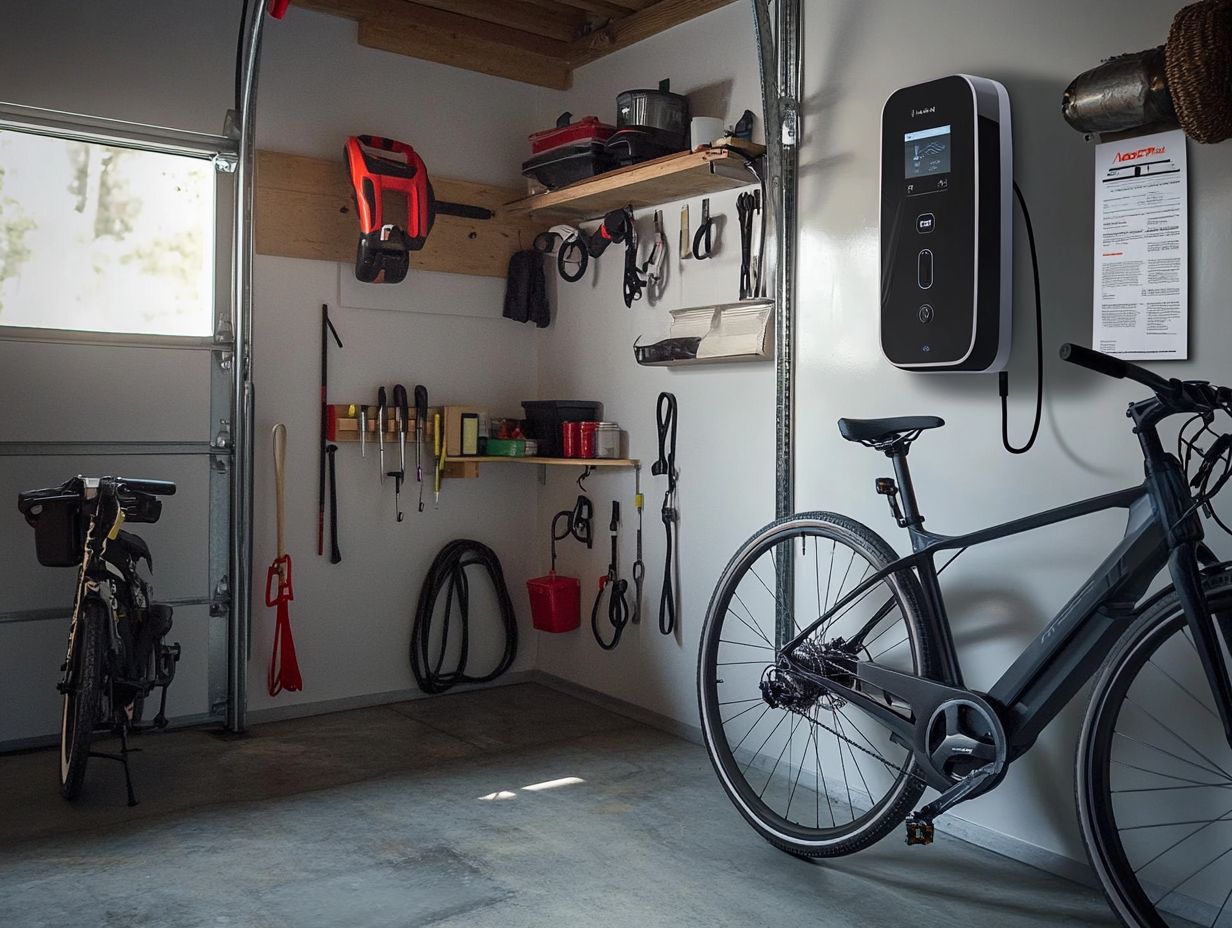
When planning for your home charger installation, consider several key factors to ensure an optimal setup that aligns with your practical needs and local regulations.
Location and accessibility are paramount. The charger should be easily reachable for your vehicle while adhering to local zoning laws.
Moreover, familiarizing yourself with the various types of home chargers available will help you select the most suitable option for your electric vehicle and lifestyle, ultimately enhancing the efficiency of your home charging network.
Location and Accessibility
The location and accessibility of your home charger are pivotal factors that can significantly influence the efficiency and convenience of charging your electric vehicle. Ideally, you’ll want the charger positioned close to a dedicated parking space, making connection easy while considering its proximity to your home’s electrical panel.
Ensuring the charger is easily accessible enhances your experience and reinforces best practices for home charger installation.
When selecting the perfect spot, take into account the layout of your driveway and any potential obstacles like trees, garages, or other structures that could obstruct access. Think about how often you ll be charging your vehicle and ensure the unit is placed for seamless daily use.
Accessibility becomes even more critical for families, as multiple users may need to plug in at different times. The last thing you want is the hassle of running extension cords or making inconvenient adjustments to your setup. Addressing these considerations early in the planning stage can save you time and frustration in the long run.
Types of Home Chargers Available
Home chargers come in different types to fit your needs. The most common ones are Level 1, which use standard household outlets, and Level 2, which charge faster with dedicated circuits.
Then there are bidirectional chargers, like the Quasar 2. These chargers can send power back to the grid, making them an excellent choice for energy-savvy homeowners!
If you have plenty of time, Level 1 chargers are great, offering about 2 to 5 miles of range per hour. For quicker charges, choose Level 2 chargers, which deliver 10 to 60 miles of range per hour ideal for daily use!
Bidirectional chargers enhance your charging efficiency and can help reduce your electricity bills by letting you sell excess energy back to the grid.
By understanding these options, you can make an informed choice about which charger aligns best with your lifestyle and energy goals.
Frequently Asked Questions
Are there incentives for installing home chargers?
Yes! You can find different incentives for installing home chargers, such as tax credits or rebates. To learn more about these options, check out how to leverage incentives for EV charging stations and consult with your local government or utility for details!
How can I find out what incentives are available in my area?
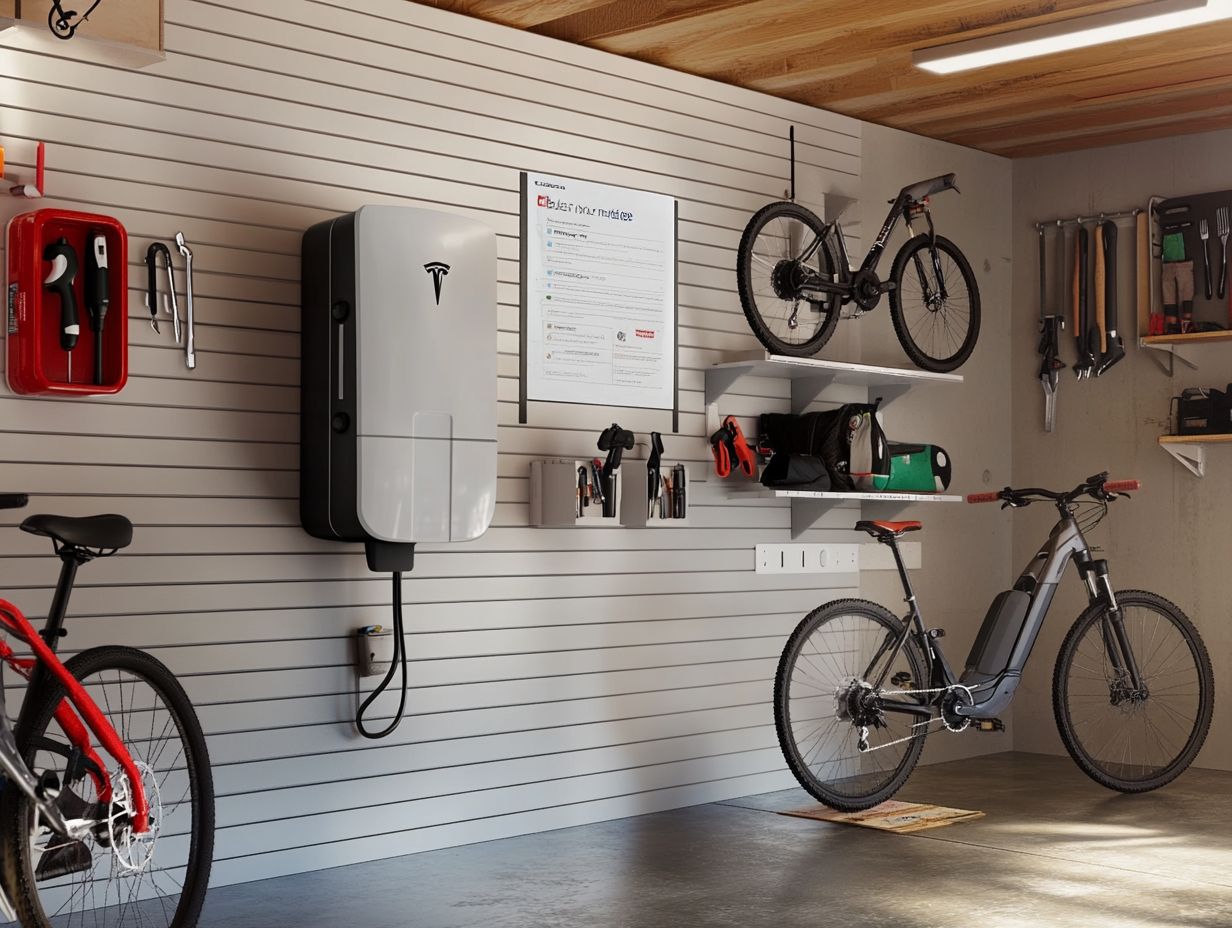
You can check with your local government or utility company for information on available incentives. A quick online search with “incentives for home charger installation” plus your city or state can also help you discover more about understanding EV charging incentives!
What types of incentives can I expect for installing a home charger?
The types of incentives may include tax credits, rebates, grants, or special utility rates for electric vehicle owners. Some may even cover installation costs or provide discounts on equipment!
Is there a time limit for applying for incentives?
The time limit can vary by program. Some have specific application periods, while others are first-come, first-served. Always check the specific program for their deadlines!
Can I still receive incentives if I have already installed a home charger?
Yes! It s possible to receive incentives even after installation. Some programs allow retroactive incentives for recently installed chargers, while others have specific installation dates.
Are there any requirements for receiving incentives for home charger installation?
Requirements can vary by program. Some may require proof of purchase and installation, while others may need you to use a certified electrician. Always check the specific requirements before applying.
Explore your options for home chargers today and take advantage of available incentives!


